Passing green belt Hradschin to the German Embassy
- Written by Portal Editor
After our ascent to the Castle of Prague, which is called Hradčany (Hradschin or castle town), we have chosen the path through the parkland towards the observation tower Petřín, which is modeled on the design of the Eiffel Tower and measures more then 60 meters of height.
The Petřín was opened to visitors in 1891.
On the edge of the park, below the Petřín, you will find the back site of the Embassy of Germany, called Lobkowitz Palace. As in August 1989, the German Prague Embassy became the focus of the media when GDR citizens sought refuge there in masses. In the following weeks, thousands of them occupied the area, after several discussions with the GDR authorities, they later allowing a total of 17,000 of their citizens to leave the embassy for the Federal Republic of Germany from September 30th. On 3 November, the ČSSR authorities granted GDR citizens the unregulated exit to the West, thus raising their part of the Iron Curtain, which is considered to be one of the most important precursors to the fall of the Berlin Wall and the subsequent German reunification.
Refugees were ransomed - Lawyer Vogel
"GDR refugees have always existed in our Prague embassy since we moved to the Palais Lobkowicz in 1974," said Hermann Huber, ambassador from December 1988 to 1992. Already four years before he took office, he had to help out in Prague on a larger wave of 160 refugees. These were "bought" by the Federal Ministry of the Inner (BMB) with the help of the lawyer Vogel, who was then well known for his activities.
In the run-up to the (almost complete) nonviolent revolutions of 1989, the embassy's site was known as a refuge for people escaping from the GDR. In the summer of that year, some GDR citizens dared to go from Prague's main railway station to the Federal Embassy. On August 19, 1989, there were about 120 refugees living there, 20 to 50 more arrived daily. On 23 August, Ambassador Hermann Huber, on the instructions of the Foreign Office, concluded the baroque palace for public visitors. The Consular Section was temporarily transferred to a Prague hotel in order to maintain the embassy status.
Trabant and Wartburg shaped the picture of the environment
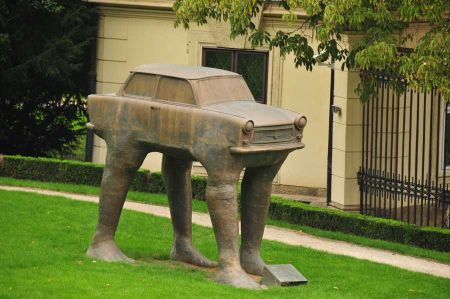 The onslaught on the embassy area, however, continued, further refugees forced themselves to enter, partly passing the watching and controlling Czechoslovakian police through the gate, or by climbing over the fence, which in part led to injuries. In the park of the embassy, tents and sanitary facilities were set up and a school enterprise for children was established. Abandoned vehicles of the brands Trabant and Wartburg coined the picture of the environment; the GDR was soon anxious to remove the dumb testimony. The sanitary conditions in the embassy sprang up during the course of Septembers, at the same time 4,000 refugees were simultaneously on the site soaked with rain. The main occupation of the people was the hour-long queue in front of the toilets, in an ankle-deep mud. Some violent clashes took place with people who were suspected of being a Stasi member.
The onslaught on the embassy area, however, continued, further refugees forced themselves to enter, partly passing the watching and controlling Czechoslovakian police through the gate, or by climbing over the fence, which in part led to injuries. In the park of the embassy, tents and sanitary facilities were set up and a school enterprise for children was established. Abandoned vehicles of the brands Trabant and Wartburg coined the picture of the environment; the GDR was soon anxious to remove the dumb testimony. The sanitary conditions in the embassy sprang up during the course of Septembers, at the same time 4,000 refugees were simultaneously on the site soaked with rain. The main occupation of the people was the hour-long queue in front of the toilets, in an ankle-deep mud. Some violent clashes took place with people who were suspected of being a Stasi member.
The then Federal Minister of Foreign Affairs Hans-Dietrich Genscher arrived on the evening of 30 September 1989. He came from negotiations with the then foreign ministers of the Soviet Union (Eduard Shevardnadze), the GDR (Oskar Fischer) and the ČSSR (Jaromír Johanes) on the margins of the UN General Assembly in New York. He told gathered journalists that he did not want to give them any notice, as he wanted to talk first with the Germans from the GDR. At 6:58 pm, he announced from the balcony of the palace:
"Dear countrymen,
we have come to you,
to inform you,
that today your departure (Ausreise)
(Thousands of shouts and exultations)
... has become possible to the Federal Republic of Germany. "
At the end of the sentence, the tears of the GDR refugees in the courtyard, who were willing to leave the country, were kind of amused by the word "Ausreise". A memorial plaque on the balcony raises the moving words. The possibility of an indirect departure into the Federal Republic, by train, by way of detour across the territory of the GDR, to maintain the façade of a regular departure from there, was, however, subsequently interrogated anxiously as a result of an arrest by the GDR organs for an escape from the GDR which was still feared. But as history showed, it was working well.
Through Hradčany Castle Park to the German Embassy in Prague
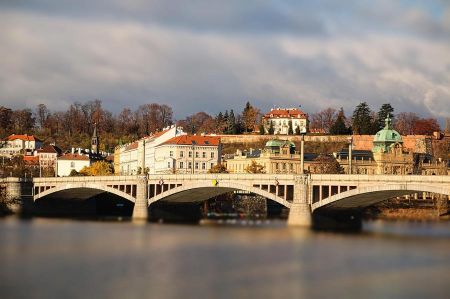 A historical walk through the Prague Castle complex and its green oases – discover the history, architecture, and nature of this unique city.
A historical walk through the Prague Castle complex and its green oases – discover the history, architecture, and nature of this unique city.
1. Introduction: Prague Castle and Hradčany Castle Park
Prague Castle, also called Hradčany, is one of the most impressive landmarks in the Czech Republic. It towers majestically above the city and is surrounded by numerous historic gardens and parks. Hradčany Castle Park is a green jewel that invites visitors to take a relaxing stroll with spectacular views of Prague.
2. History of Hradčany Castle Park
 The Castle Park was created in the 16th century as part of the royal residence and served as a retreat for the Bohemian rulers. Over the centuries, the park has been redesigned several times, including in Baroque and English styles. Today, it is a popular recreational spot for locals and tourists.
The Castle Park was created in the 16th century as part of the royal residence and served as a retreat for the Bohemian rulers. Over the centuries, the park has been redesigned several times, including in Baroque and English styles. Today, it is a popular recreational spot for locals and tourists.
Also read: The most beautiful historic parks in Europe
3. Prague Castle – The heart of Czech history
Prague Castle is the largest enclosed castle complex in the world and a UNESCO World Heritage Site. It consists of several impressive structures:
- St. Vitus Cathedral – A Gothic masterpiece and coronation church of the Bohemian kings
- The Old Royal Palace – The former residence of the Bohemian rulers
- The Golden Lane – A picturesque alley lined with historic craftsmen's houses
Insider tip: Visit the castle complex early in the morning to avoid the crowds.
4. A stroll through the Royal Gardens
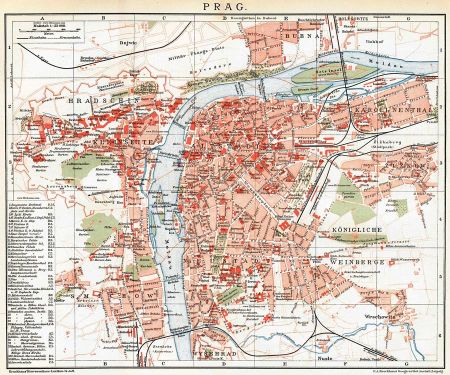 Prague Castle is surrounded by beautiful gardens, including:
Prague Castle is surrounded by beautiful gardens, including:
The Royal Garden – Famous for the Ball Game Pavilion and the Singing Fountain
The South Garden – With fantastic views of Prague's Old Town
The Bastion Garden – A tranquil retreat with historic charm
These gardens offer a perfect opportunity to combine natural beauty with impressive architecture.
Learn more: The most beautiful gardens in Prague
5. The German Embassy in Prague – A place of historical significance
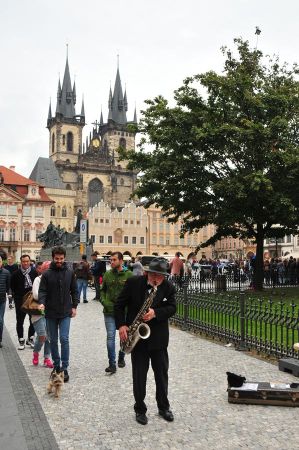 The German Embassy in Prague, located in the Lobkowicz Palace, is not only a diplomatic mission, but also a symbolic site of recent European history.
The German Embassy in Prague, located in the Lobkowicz Palace, is not only a diplomatic mission, but also a symbolic site of recent European history.
During the 1989 refugee movement, thousands of East German citizens sought refuge in the embassy. The then German Foreign Minister, Hans-Dietrich Genscher, announced his famous words here on September 30, 1989:
"We have come to you to inform you that today your departure..."
A sentence that went down in history and helped usher in the fall of the Berlin Wall.
Address: Vlašská 19, 118 01 Prague
6. The Velvet Revolution and the German Embassy
 The refugee movement to the German Embassy in Prague was a pivotal moment in 1989. Thousands of East German citizens camped out for weeks in the garden of the Lobkowicz Palace, hoping for permission to leave.
The refugee movement to the German Embassy in Prague was a pivotal moment in 1989. Thousands of East German citizens camped out for weeks in the garden of the Lobkowicz Palace, hoping for permission to leave.
These events were closely linked to the Velvet Revolution in Czechoslovakia, which ultimately led to the overthrow of the communist regime.
Tip: The Museum of Communist History in Prague explores this period in detail.
Also read: Prague and the Velvet Revolution
7. Architectural Highlights Along the Way
 On your way from the Castle Park to the German Embassy, you'll pass several architectural masterpieces:
On your way from the Castle Park to the German Embassy, you'll pass several architectural masterpieces:
The Schwarzenberg Palace – A Renaissance gem with a sgraffito façade
The Lobkowicz Palace – Now home to the famous Lobkowicz Collection
The Estates Theatre – One of the oldest stages in Europe, famous for Mozart's "Don Giovanni"
These buildings tell the exciting story of Prague and are worth a closer look.
8. Cultural Sights in the Area
In addition to the German Embassy, there are many other cultural highlights in the area:
- The Strahov Monastery – Famous for its impressive Baroque library
- The Charles Bridge – One of the most beautiful bridges in Europe
- Kampa Park – An idyllic green space on the Vltava River
Tip: Visit the Charles Bridge early in the morning for the best view without the crowds.
Also read: The best photo spots in Prague
9. Practical tips for your visit
 Best time to visit: Spring and autumn are ideal for experiencing the city without large crowds.
Best time to visit: Spring and autumn are ideal for experiencing the city without large crowds.
Getting there: Prague Castle and Castle Park are easily accessible by public transport or on foot.
Admission: Castle Park is free. Prague Castle can be visited with a ticket.
Recommended route: Start at St. Vitus Cathedral, stroll through the Royal Gardens, and end at the German Embassy.
10. Conclusion: Prague – A city full of history and nature
A walk through the Hradčany Castle Park to the German Embassy in Prague is a unique blend of nature, architecture, and history. The impressive castle complex, the Royal Gardens, and the symbolic embassy together tell the eventful history of Europe.
If you visit Prague, take your time for this walking tour – it's worth it!
FAQs – Frequently Asked Questions
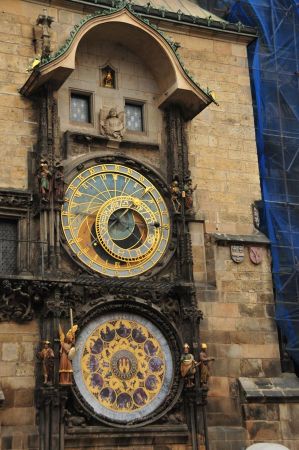 1. How long does a walk from the Castle Park to the German Embassy take?
1. How long does a walk from the Castle Park to the German Embassy take?
About 45 minutes, depending on how long you spend at the sights.
2. Is the German Embassy open to visitors?
No, the embassy is not open to tourists, but the historic garden can be viewed from the outside.
3. Are there guided tours of Prague Castle?
Yes, many companies offer historical tours of the castle complex.
4. Which sights in Prague are free?
The Prague Castle Gardens, the Charles Bridge, and the Old Town Square are free to enter.
5. Where are the best views of Prague?
From the observation deck of Prague Castle or from the Petřín Lookout Tower, you have a fantastic view of the city.
Planning a visit to Prague? Get inspired by our ultimate travel guide!
Please read as well:
Station 43 - From Jena to Triocamp Praha in Prague
From Camping - Hiking Tour through the inner city of Jena
-
 Hradschin Park & German Embassy Prag
Hradschin Park & German Embassy Prag
Hradschin Park & German Embassy Prag
Hradschin Park & German Embassy Prag
-
 Hradschin Park & German Embassy Prag
Hradschin Park & German Embassy Prag
Hradschin Park & German Embassy Prag
Hradschin Park & German Embassy Prag
-
 Hradschin Park & German Embassy Prag
Hradschin Park & German Embassy Prag
Hradschin Park & German Embassy Prag
Hradschin Park & German Embassy Prag
-
 Hradschin Park & German Embassy Prag
Hradschin Park & German Embassy Prag
Hradschin Park & German Embassy Prag
Hradschin Park & German Embassy Prag
-
 Hradschin Park & German Embassy Prag
Hradschin Park & German Embassy Prag
Hradschin Park & German Embassy Prag
Hradschin Park & German Embassy Prag
-
 Hradschin Park & German Embassy Prag
Hradschin Park & German Embassy Prag
Hradschin Park & German Embassy Prag
Hradschin Park & German Embassy Prag
-
 Hradschin Park & German Embassy Prag
Hradschin Park & German Embassy Prag
Hradschin Park & German Embassy Prag
Hradschin Park & German Embassy Prag
-
 Hradschin Park & German Embassy Prag
Hradschin Park & German Embassy Prag
Hradschin Park & German Embassy Prag
Hradschin Park & German Embassy Prag
-
 Hradschin Park & German Embassy Prag
Hradschin Park & German Embassy Prag
Hradschin Park & German Embassy Prag
Hradschin Park & German Embassy Prag
-
 Hradschin Park & German Embassy Prag
Hradschin Park & German Embassy Prag
Hradschin Park & German Embassy Prag
Hradschin Park & German Embassy Prag
-
 Hradschin Park & German Embassy Prag
Hradschin Park & German Embassy Prag
Hradschin Park & German Embassy Prag
Hradschin Park & German Embassy Prag
-
 Hradschin Park & German Embassy Prag
Hradschin Park & German Embassy Prag
Hradschin Park & German Embassy Prag
Hradschin Park & German Embassy Prag
https://www.alaturka.info/en/czech-republic/prague/4108-passing-the-green-belt-at-hradschin-to-the-german-embassy#sigProId28e6fac7be
